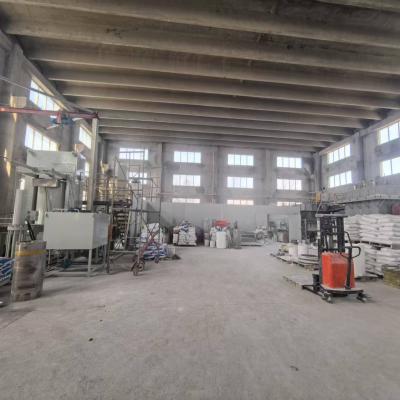
Innovative substance exhibit unique physical attributes, establishing them perfect for a extensive array of applications. Emerging from aeronautical and automobiles to gadgets, these elements are incessantly advancing to meet the expectations of a contemporary world.
- Their toughness and resistance to intense heat levels make them paramount for state-of-the-art apparatus.
- Over and above, technical ceramics deliver merits in terms of longevity, contributing the development of state-of-the-art systems.
Crafting Materials: Tailored for Exceptional Effectiveness
Constructed ceramics thrive in severe functions due to their unparalleled properties. Constructed from selected with care raw substances and treated by strict processing operations, these progressive materials showcase unmatched sturdiness, dulling resistance, and endurance to extreme heat, corrosion, and friction. From outer space ingredients to fine crafting tools, industrial ceramics present unmatched effectiveness across diverse branches. Their pliability allows withstanding harsh circumstances, securing persistence and constancy. As modernization progresses, the desire for cutting-edge tradables grows, cementing the essential part of industrial ceramics in shaping a advanced period.
Pioneering Ceramics: Surpassing Substance Margins
Compounds, showing outstanding fortitude and tenacity, are underwent a shift. Advanced ceramics, manufactured with meticulous control over their blend and microstructure, surpassing the constraints of the extent of imaginable. These materials showcase a diverse assortment of traits, appointing them advantageous for rigorous spheres such as flight, therapeutics, and electricity. From thin parts that persist through extreme hotness to bio-tolerant implants that fuse fast with the flesh, advanced ceramics are redefining our surroundings.
Exact Ceramic Fabrication: Achieving Demanding Demands
High-tech ceramic fabrication has improved substantially in recent times, facilitating the assembly of detailed and highly useful ceramic units. These items are key across a wide range of sectors, including orbital, medical, and technological domains. Catering to the specialized requirements for these deployments calls for strict fabrication approaches that ensure dimensional exactness, surface texture, and material specifications. Next-generation ceramic fabrication processes use various methods, including slip casting, injection molding, and additive manufacturing. These processes allow the manufacture of sophisticated configurations and detailed characteristics with remarkable precision. Additionally, advances in material studies have produced new ceramic blends endowed with improved qualities. These compounds maintain increased resilience, lastingness, and tolerance to severe heat conditions, allowing their use in stringent sectors.
The opportunities for strict ceramic fabrication are vast. As explorations and progress make headway, we can reckon on even more complex practices and elements that will further extend the limits of what is within reach in this domain.
Premium Ceramic Products for Tough Conditions
Modern ceramic substances feature extraordinary fortitude and tolerance against challenging conditions, making them favored for exacting applications in space sectors. These high-tech ceramics can bear high temperature loads, guard against deterioration, and keep their efficiency under intense load-bearing impacts. Their unique crystalline elements permit consistent performance in critical circumstances, including thermal devices, aircraft engines, and nuclear reactors.
- Ceramic matrix composites
- Thermal resistance
- Optimized lightness
Ceramic Blends: Consolidating Power and Usefulness
Alloyed ceramics furnish a significant mix of mechanical resilience and distinct functional capabilities. Through the fusion of ceramic grains within a copyright, these blends achieve notable efficiency. This synthesis results in heightened immunity against high temperature stress, wearing, and chemical degradation, rendering them fit for exacting deployments in orbital, motoring, and sustainable energy markets. Furthermore, ceramic composites are engineered to possess specialized properties like electrical conductivity or biocompatibility, extending their reach across diverse arenas.
Internal Regulation in Advanced Ceramics
Accomplishing intended traits in cutting-edge ceramics routinely obligates thorough supervision over their microstructure. Diverse refinement variables, including sintering thermal setting, duration, and atmosphere, alongside the infusion of dopants or additive phases, notably determine the distribution of microstructures, absorption, and other microstructural elements. Meticulous refinement of these variables allows for the enhancement of durability, crack resistance, and thermoelectric conductivity. In particular, lifting the sintering thermal setting can foster grain inflation, thus increasing density and improving mechanical effectiveness. Conversely, adjusting the firing atmosphere may alter the oxidation status of the ceramic, thereby influencing its electrical conductivity or magnetic aspects. Realizing these relationships between microstructure and properties is key for fabricating advanced ceramics with specialized ability suitable for wide roles.
Scratching-Resistant Ceramics: Increasing Lifespan
Inside heavy-duty workshop domains, where components are strained to constant abrasion and deterioration, compounds with impressive erosion resistance are paramountly required. Wear-resistant ceramics have surfaced as a top fix, affording unparalleled toughness and functionality in broad areas such as processing, mining, and aerospace. These leading compounds possess a rare grain layout that builds up their capacity to combat scraping. By applying the inherent resilience and thickness of ceramic compounds, engineers can develop tough components capable of weathering the most challenging operating conditions.
Medical-Grade Substances: Purposes in Biomedical Field
Clinically safe ceramics have overhauled the hospital market, supplying an array of positive attributes for multiple purposes. These materials are inert within the tissue, minimizing reactionary responses and stimulating regeneration. A prime application for biocompatible ceramics is in orthopedic implants, where their sturdiness sustains long-lasting reinforcement to damaged organisms.
What's more, they are used in dental restorations, furnishing a long-lasting and harmonious solution for oral reconstruction. Ceramics also assume a key position in pharmaceutical formulations, supporting the targeted dispensary of medication to specific points within the biological makeup.
- Furthermore, biocompatible ceramics are steadily being scrutinized for cellular therapy, serving as a foundation for cell proliferation.
- Therefore, the horizon of biocompatible ceramics in medicine looks promising, with continual development expanding their usages.
Ceramic Detection Devices: Driving Reliable Evaluations
Smart ceramic detectors have come forth as important aspects across a inclusive array of realms. steatite ceramic These gadgets make use of the singular essentials of ceramic coatings to deliver highly trustworthy quantifications. Their durability in {demanding|harsh| 